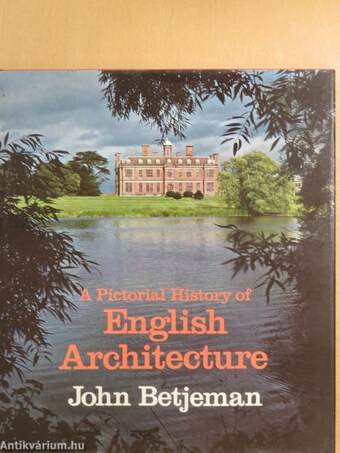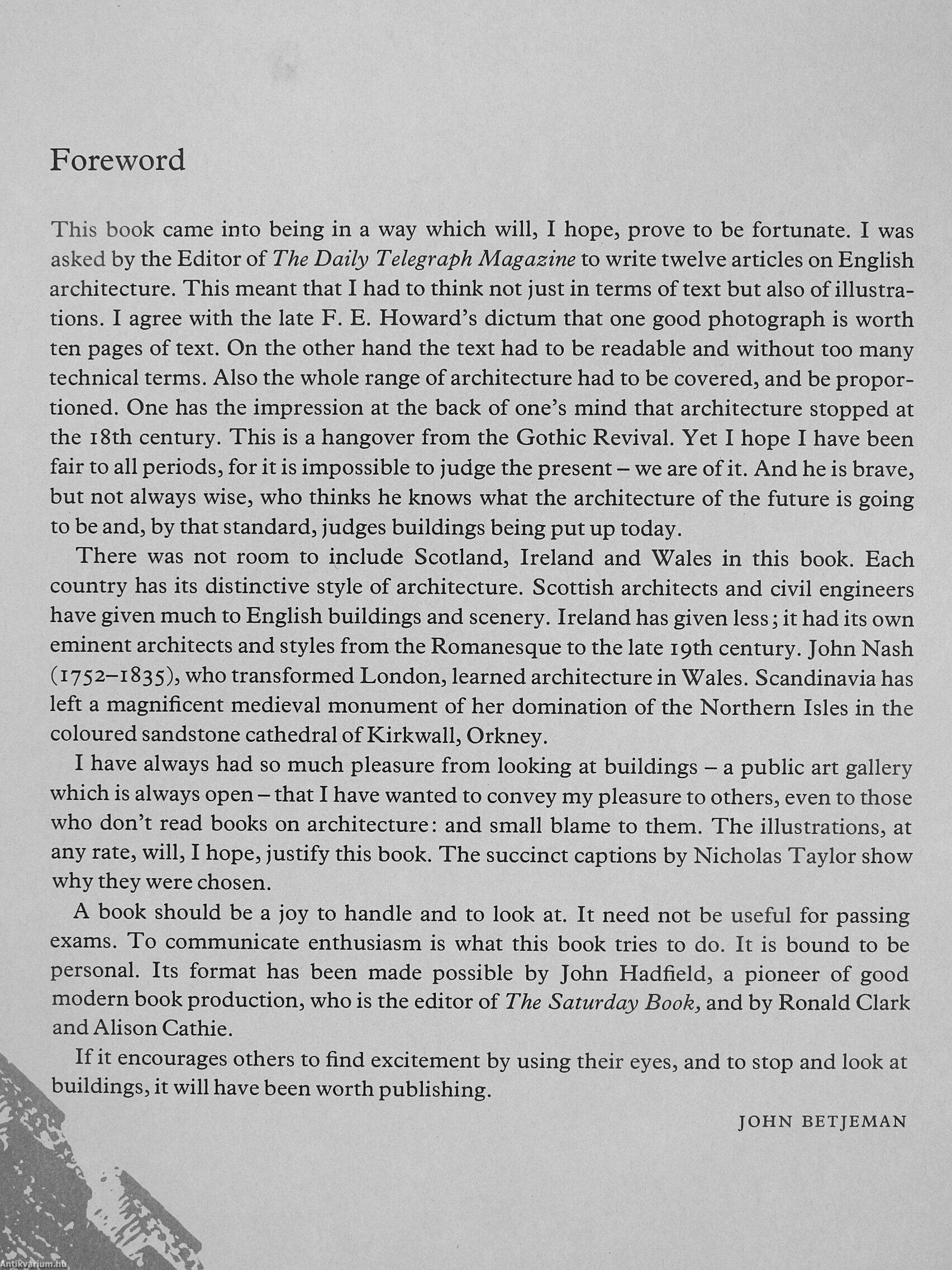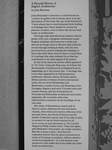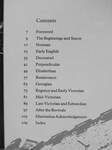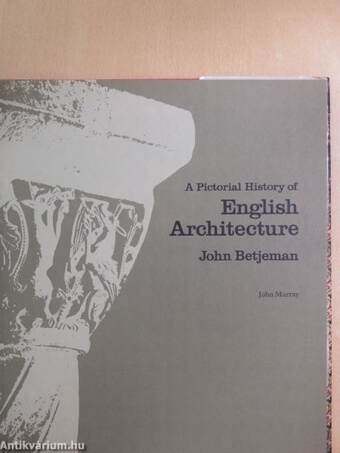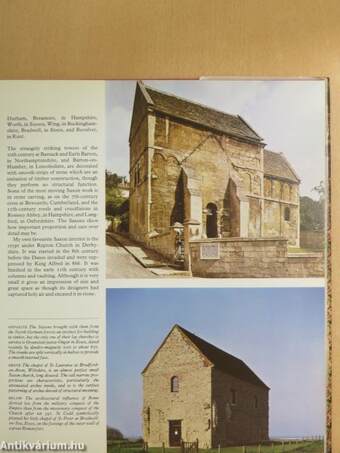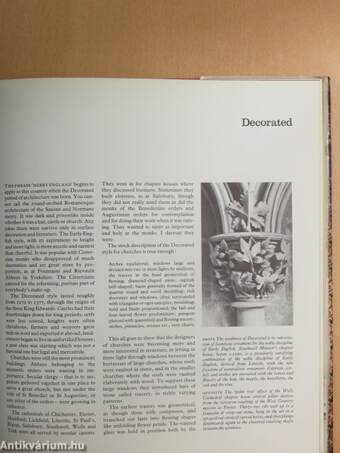1.068.099
kiadvánnyal nyújtjuk Magyarország legnagyobb antikvár könyv-kínálatát

VISSZA
A TETEJÉRE
JAVASLATOKÉszre-
vételek
A Pictorial History of English Architecture
| Kiadó: | John Murray (Publishers) Ltd |
|---|---|
| Kiadás helye: | London |
| Kiadás éve: | |
| Kötés típusa: | Vászon |
| Oldalszám: | 112 oldal |
| Sorozatcím: | |
| Kötetszám: | |
| Nyelv: | Angol |
| Méret: | 27 cm x 24 cm |
| ISBN: | 0-7195-2640-X |
| Megjegyzés: | Fekete-fehér, színes fotókkal. |
naponta értesítjük a beérkező friss
kiadványokról
naponta értesítjük a beérkező friss
kiadványokról
Előszó
TovábbFülszöveg
A Pictorial History of English Architecture by John Betjeman
John Betjeman's reference to architecture as 'a public art gallery that is always open' is an apt description of this book. He says in his Foreword: 'I have always had so much pleasure from looking at buildings that I have wanted to convey my pleasure to others, even to those who do not read books on architecture.'
The huge radio and television audience that he guides with such contagious enthusiasm round English buildings will know how vividly and directly he brings them to life and what riches he reveals through looking at them, with his own personal focus, and by relating the buildings to those who built them, lived in them or used them. It is perhaps this same intimate focus that has contributed to the wide appeal of his poetry.
In this book, based on articles which appeared in The Daily Telegraph Magazine, he follows the development of architecture in England from its beginnings up to the present day - a heritage... Tovább
Fülszöveg
A Pictorial History of English Architecture by John Betjeman
John Betjeman's reference to architecture as 'a public art gallery that is always open' is an apt description of this book. He says in his Foreword: 'I have always had so much pleasure from looking at buildings that I have wanted to convey my pleasure to others, even to those who do not read books on architecture.'
The huge radio and television audience that he guides with such contagious enthusiasm round English buildings will know how vividly and directly he brings them to life and what riches he reveals through looking at them, with his own personal focus, and by relating the buildings to those who built them, lived in them or used them. It is perhaps this same intimate focus that has contributed to the wide appeal of his poetry.
In this book, based on articles which appeared in The Daily Telegraph Magazine, he follows the development of architecture in England from its beginnings up to the present day - a heritage that is not often regarded in its full perspective: prehistoric, Roman, Saxon, Norman castles, abbeys and the evolution of early ecclesiastical styles, the era of the Elizabethan and Renaissance country houses, the flowering of the Georgian, Regency and early Victorian town and country houses, and the development of Victorian and Edwardian architecture and urban expansion. He concludes with some characteristic comments on the buildings of our own time.
His choice of illustrations, nearly half of them in colour, illumines his text and shows visually, often with a provocative reflection of his personal views, the thread of history and the wealth of national treasure that (if we take trouble to preserve it) can be freely enjoyed by all. In an article on John Betjeman in The Cornhill Magazine Philip Larkin writes 'Time and again, with Betjeman's best poems, the reader exclaims, But this is about a place! And then the realization follows that the place is presented in terms of its human association, without which it would be insignificant.' It is this human-scale perspective that makes this book unlike any other book on architecture.
.1
i
i \
¦i;
I, i i
M
'i] t '„ • r
. rj
[fi v]
I' Vissza
Témakörök
John Betjeman
John Betjeman műveinek az Antikvarium.hu-n kapható vagy előjegyezhető listáját itt tekintheti meg: John Betjeman könyvek, művekMegvásárolható példányok
Nincs megvásárolható példány
A könyv összes megrendelhető példánya elfogyott. Ha kívánja, előjegyezheti a könyvet, és amint a könyv egy újabb példánya elérhető lesz, értesítjük.



